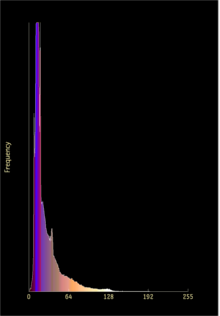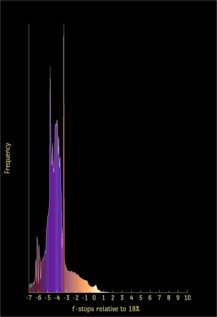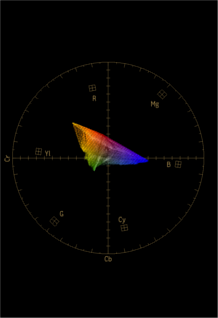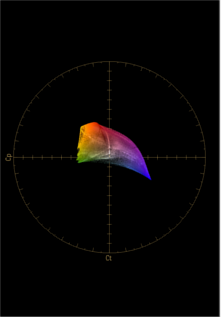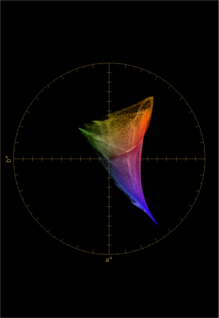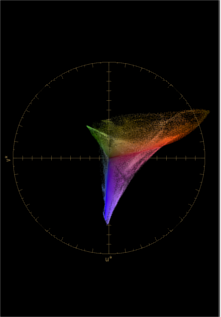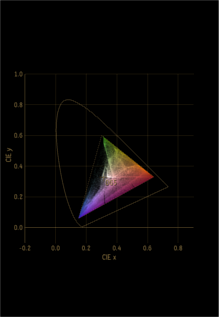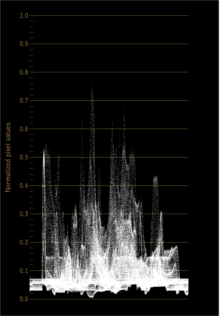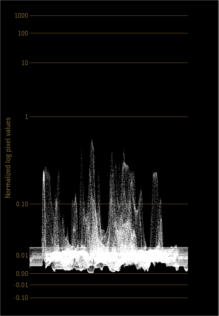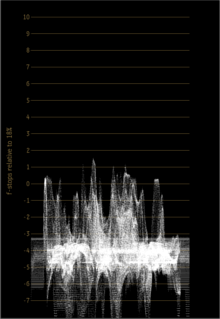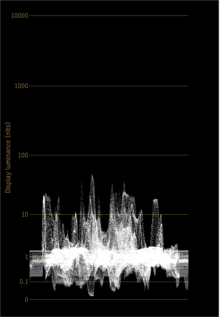Using Scopes
The Scopes view enables you to display the different Scopes widgets inside the Player or a Viewport. The widgets available in the Scopes view display different interpretations of the tonal values of your media, which can be extremely helpful in producing the looks/effects that you want.
Enabling & Manipulating Scopes
The Scopes view is available in the various viewports in the application, and in the Player. From the viewports, the Scopes view can be enabled using the Show Scopes option, from the context menu or by using the "Display" button, located in the View menu / Scopes section. From the Player, the Scopes are accessible via the “Show Scopes” entry in the player Options drop-down.
You can change the view by using the "Viewing" button or by using the viewing shortcuts to change the information inside the different widgets. The standard “Continuous Pan” and “Continuous Zoom” shortcuts are used to pan or zoom the image or the scopes (depending on the position of the cursor when the pan/zoom operation starts). And the panel can be resized by dragging the line between the panel and the image in the player / viewport.
Whether you're in the Player or in Multi-View, you can change Scopes widgets by right-clicking the Widget and selecting another widget from the context menu.
When using the Player, the Scopes view is displayed to the right of the Player. When in multi-view, the Scopes view is displayed on top of the selected viewport and the information displayed in the Scopes widget is derived from the underlying image, not from a different viewport.
Information from another source can be displayed within the Scopes view widget. To do so, you must enable the Compare buffer in the viewport displaying the Scopes view.
Using a Second Monitor with Scopes
Aside from the Player and Viewports, the Scopes view can also be displayed in the secondary monitor of a Dual Monitor configuration. By default, the Scopes view is displayed in addition to the Media Panel in the secondary monitor, and you can, as usual, decide whether it is displayed on the right, the left or full width. However, a preference called "Display on 2nd Monitor" is available under the Media Panel section of the General tab, in the Preferences menu. It enables you to decide if the Media Panel is displayed on the primary or the secondary monitor. The preference is enabled by default, displaying the Media Panel on the secondary monitor. This applies to all tabs, other than Batch. In Batch, a viewport is always available to enable the Scopes view.
If you do not wish to use the Scopes view on the secondary monitor, you can enable the "Full Width" option inside the "Media Panel" dropdown button.
If you want a fullscreen Scopes view in your secondary Monitor, you can either display the Media Panel in the primary monitor or select the "Hide" option from the "Media Panel" dropdown menu.
It is possible to change one widget for another, by opening its context menu and selecting a different widget from the list.
The following table lists the different scopes that are available and their relative settings:
Histograms
There are two Histograms to choose from. For each Histogram, you can choose between the following modes: Red, Green, Blue, RGB, RGB Parade, Luminance - Colours and Luminance - Mono, and can set the signal intensity, from the Preset Widgets tab of the Scopes Settings. The difference between the two available Histograms is their horizontal scale.
Vectorscopes
There are five Vectorscopes to choose from. For all of the Vectorscopes, you can choose between the following modes: Colours and Mono and can set the signal intensity, from the Preset Widgets tab of the Scopes Settings.
Every vectorscope but Video CbCr display colours in absolute units. This allows you to compare the value of a colour relative to specific gamut boundaries. Traditional video scopes simply display the value of a colour relative to the boundaries of its specific integer encoding, e.g. there is no way to compare DCI-P3 vs. Rec.709. These absolute scopes are particularly well-suited to checking the colours from camera-raw source footage in either logarithmic or scene-linear working spaces. However they can also be used with video colours (e.g. to check whether a DCI-P3 master has any colours outside the Rec.709 gamut).
Waveforms
There are four Waveforms to choose from. For each Waveforms, you can select between the following modes: Red, Green, Blue, RGB, RGB Parade, Luminance - Colours and Luminance - Mono, and can set the signal intensity, from the Preset Widgets tab of the Scopes Settings.
3D Cube
| Widget | Available Settings | Image |
|---|---|---|
| 3D Cube |
| 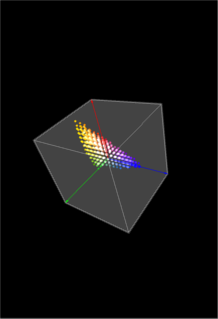 |
Scopes Settings
The Global Scopes settings, which affect all widgets, can be adjusted from the "Scopes Settings" dialog window, accessible from the Scopes context menu. The following parameters can be set:
- The number of widgets displayed in a viewport (1 to 4).
- The Scopes view background. You can choose a coloured background of your choice.
- The Reference colour.
- Signal Data Precision.
Signal Data Precision
You can also adjust the signal data precision inside the widgets. Signal Data Precision determines the maximum analysis signal width, in pixels. Selecting a lower resolution has a lesser impact on the playback. This setting is available in the new "Preferences" tab, located in the Scopes Settings dialog window. The available settings are:
| Static Precision | Jog/Scrub Precision | Playback Precision |
|---|---|---|
| 512 | 512 | No Update |
| 1024 | 1024 | 512 |
| 2048 | 2048 | 1024 |
| 4096 | 4096 | 2048 |
| 8192 | 8192 | 4096 |
| 8192 |
Dynamic Updating
The information displayed in the Scopes view widgets dynamically updates during playback, under certain conditions:
- The Playback Maximum Precision setting is set to a value other than "No Update".
- The view currently set in the viewport displaying the Scopes view is the same as the view selected in the current viewport, when in multi-view.
Colour Management
You can define a Monitoring Colour Space for the Scopes view in Preferences / Colour Management / Monitors. The Monitoring Colour Space selects which type of display should be used with your selected Viewing Transform when calculating the values displayed on the scopes. Note that this may be different from your Graphics or Broadcast monitors. For example, you may be on a laptop and have your Graphics monitor set to use its ICC profile but want the scopes to monitor in Rec.709. Or you may have your Broadcast monitor set to output X'Y'Z' but want to monitor in DCI-P3.
- In the Player, the Viewing Transform is inherited from the clips being displayed.
- In a Viewport, the Scopes view has its own viewing transform that can be defined from the viewport.
As for the actual colours used within a Vectorscope, Waveform or Histogram widget: they are colour managed. This ensures that the scopes represent the colours as they are displayed in the image you are monitoring.
Diagnostic Controls
The viewport diagnostics controls (Exposure, Contrast and Gamma) can be modified in the viewport, even while the Scopes view is enabled. You can apply the modifications to the Scopes widgets or not, using the Apply Diagnostics setting, located in the Preferences tab of the Scopes Settings dialog window. It is disabled by default.
Presets
You can save custom Scopes Settings as presets, using the Add Preset option from the Current Preset dropdown button.
- A new preset must be created before you modify the settings, because the last modified settings are preserved for the existing presets avoiding the need to re-save it.
- Existing presets can be deleted using the "Delete Selected Preset" option located in the Preset dropdown button. The "Default" preset can be edited, but cannot be deleted.
- Presets can be selected from within the Scopes Settings dialog window, or from the Scopes context menu.

